Flow Physics of Profile Control Fluids in Porous Media and Implications for Enhanced Oil Recovery: A Microfluidic Study
Abstract
:1. Introduction
2. Methodology
2.1. Chemicals
2.2. Micromodels
2.3. Micromodel Flooding Schemes
3. Results and Discussion
3.1. Performance Tests of Profile Control Fluids
3.1.1. Emulsifier Performance Test
3.1.2. Microsphere Performance Test
3.1.3. Gel Performance Test
3.2. Flow Dynamics of Plugging Agents
3.2.1. Water Shutoff of Emulsifier
3.2.2. Water Shutoff of the Microsphere
3.2.3. Water Shutoff of Gel
3.3. Flow Dynamics of Plugging Agents
4. Conclusions
Author Contributions
Funding
Institutional Review Board Statement
Informed Consent Statement
Data Availability Statement
Acknowledgments
Conflicts of Interest
References
- Luo, C.; Jia, A.; Guo, J.; He, D.; Wei, Y.; Luo, S. Analysis on effective reservoirs and length optimization of horizontal wells in the Sulige Gasfield. Nat. Gas Ind. B 2016, 3, 245–252. [Google Scholar] [CrossRef] [Green Version]
- Saikia, T.; Sultan, A.; Barri, A.A.; Khamidy, N.I.; Shamsan, A.A.; Almohsin, A.; Bataweel, M. Development of pickering emulsified polymeric gel system for conformance control in high temperature reservoirs. J. Pet. Sci. Eng. 2020, 184, 106596. [Google Scholar] [CrossRef]
- Chen, X.; Li, Y.; Liu, Z.; Zhang, J.; Chen, C.; Ma, M. Investigation on matching relationship and plugging mechanism of self-adaptive micro-gel (SMG) as a profile control and oil displacement agent. Powder Technol. 2020, 364, 774–784. [Google Scholar] [CrossRef]
- You, Q.; Wen, Q.; Fang, J.; Guo, M.; Zhang, Q.; Dai, C.L. Experimental study on lateral flooding for enhanced oil recovery in bottom-water reservoir with high water cut. J. Pet. Sci. Eng. 2019, 174, 747–756. [Google Scholar] [CrossRef]
- Zhou, D.; Jiang, T.; Feng, J.; Bian, W.; Liu, Y.; Zhao, J. Research of Water Flooded Performance and Pattern in Horizontal Well with Bottom-Water Drive Reservoir. In Proceedings of the Canadian International Petroleum Conference, Calgary, AB, Canada, 8–10 June 2004; Petroleum Society of Canada: Calgary, AB, Canada, 2004. [Google Scholar]
- Bai, Y.; He, S.; Lian, Y.; Dai, C.; Zhang, H. Giant surfactant-stabilized N2-foam for enhanced oil recovery after water flooding. RSC Adv. 2019, 9, 31551–31562. [Google Scholar] [CrossRef] [Green Version]
- Zhang, Y.; Gao, M.; You, Q.; Fan, H.; Li, W.; Liu, Y.; Fang, J.; Zhao, G.; Jin, Z.; Dai, C.L. Smart mobility control agent for enhanced oil recovery during CO2 flooding in ultra-low permeability reservoirs. Fuel 2019, 241, 442–450. [Google Scholar] [CrossRef]
- Hu, Z.; Yang, J.; Lu, B.; Hou, X.; Huang, X.; Gong, L.; Li, W.; Li, S. Hydrostatic pressure characteristics and pressure control mechanism of foam casing in deepwater wells. Acta Pet. Sin. 2019, 40, 726–733. [Google Scholar]
- Liang, B.; Jiang, H.; Li, J.; Chen, F.; Miao, W.; Yang, H.; Qiao, Y.; Chen, W. Mechanism study of disproportionate permeability reduction using nuclear magnetic reso-nance T2. Energy Fuels 2018, 32, 4959–4968. [Google Scholar] [CrossRef]
- Seright, R.S. Impact of dispersion on gel placement for profile control. SPE Reserv. Eng. 1991, 6, 343–352. [Google Scholar] [CrossRef]
- Seright, R.S. Polymer gel dehydration during extrusion through fractures. SPE Prod. Facil. 1999, 14, 110–116. [Google Scholar] [CrossRef] [Green Version]
- Lane, R.H.; Seright, R.S. Gel Water Shutoff in Fractured or Faulted Horizontal Wells. In Proceedings of the SPE/CIM International Conference on Horizontal Well Technology, Calgary, AB, Canada, 6–8 November 2000; Society of Petroleum Engineers: Calgary, AB, Canada, 2000. [Google Scholar]
- Liang, T.; Hou, J.; Qu, M.; Zhao, M.; Raj, I. High-viscosity α-starch nanogel particles to enhance oil recovery. RSC Adv. 2020, 10, 8275–8285. [Google Scholar] [CrossRef]
- Wang, Z.; Bai, B.; Long, Y.; Wang, L. An Investigation of CO2-Responsive Preformed Particle Gel for Conformance Control of CO2 Flooding in Reservoirs with Fractures or Fracture-Like Channels. SPE J. 2019, 24, 2398–2408. [Google Scholar] [CrossRef]
- Yang, J. Calculation method of surface conductor setting depth in deepwater oil and gas welss. Acta Pet. Sin. 2019, 40, 1396–1406. [Google Scholar]
- Khademolhosseini, R.; Jafari, A.; Mousavi, S.M.; Manteghian, M. Investigation of synergistic effects between silica nanoparticles, bio-surfactant and salinity in simultaneous flooding for enhanced oil recovery. RSC Adv. 2019, 9, 20281–20294. [Google Scholar] [CrossRef] [Green Version]
- Hu, Z.; Yang, J.; Li, W.; Li, S.; Feng, P.; Xin, Y. Research and development of compressible foam for pressure management in casing annulus of deepwater wells. J. Pet. Sci. Eng. 2018, 166, 546–560. [Google Scholar] [CrossRef]
- Yu, F.; Jiang, H.; Fan, Z.; Xu, F.; Su, H.; Li, J. Formation and Flow Behaviors of in Situ Emulsions in Heavy Oil Reservoirs. Energy Fuels 2019, 33, 5961–5970. [Google Scholar] [CrossRef]
- Hu, Z.; Yang, J.; Liu, S.; Li, W.; Li, S.; Tong, G. Prediction of sealed annular pressure between dual packers in HPHT deepwater wells. Arab. J. Geosci. 2018, 11, 489. [Google Scholar] [CrossRef]
- Yu, F.; Jiang, H.; Xu, F.; Fan, Z.; Su, H.; Li, J. New insights into flow physics in the EOR process based on 2.5D reservoir micromodels. J. Pet. Sci. Eng. 2019, 181, 106214. [Google Scholar] [CrossRef]
- Xu, K.; Liang, T.; Zhu, P.; Qi, P.; Lu, J.; Huh, C.; Balhoff, M. A 2.5-D glass micromodel for investigation of multi-phase flow in porous media. Lab Chip 2017, 17, 640–646. [Google Scholar] [CrossRef]
- Xu, K.; Zhu, P.; Colon, T.; Huh, C.; Balhoff, M. A Microfluidic Investigation of the Synergistic Effect of Nanoparticles and Surfactants in Macro-Emulsion-Based Enhanced Oil Recovery. SPE J. 2017, 22, 459–469. [Google Scholar] [CrossRef]
- Xu, K.; Agrawal, D.K.; Darugar, Q. Hydrophilic Nanoparticle-Based Enhanced Oil Recovery: Microfluidic Investigations on Mechanisms. Energy Fuels 2018, 32, 11243–11252. [Google Scholar] [CrossRef]
- Yu, F.; Jiang, H.; Fan, Z.; Xu, F.; Su, H.; Cheng, B.; Liu, R.; Li, J. Features and imbibition mechanisms of Winsor I type surfactant solution in oil-wet porous media. Pet. Explor. Dev. 2019, 46, 1006–1013. [Google Scholar] [CrossRef]
- Sendekie, Z.B.; Bacchin, P. Colloidal jamming dynamics in microchannel bottlenecks. Langmuir 2016, 32, 1478–1488. [Google Scholar] [CrossRef] [Green Version]
- Liang, B.; Jiang, H.; Li, J.; Seright, R.S.; Lake, L.W. Further insights into the mechanism of disproportionate permeability reduction. In Proceedings of the SPE Annual Technical Conference and Exhibition, San Antonio, TX, USA, 9–11 October 2017; Society of Petroleum Engineers: Calgary, AB, Canada, 2017. [Google Scholar]
- Su, H.; Zhou, F.; Wang, Q.; Yu, F.; Dong, R.; Xiong, C.; Li, J.; Liang, T. Flow Physics of Polymer Nanospheres and Diluted Microemulsion in Fractured Carbonate Reservoirs: An Investigation into Enhanced Oil Recovery Mechanisms. SPE J. 2021, 26, 2231–2244. [Google Scholar] [CrossRef]

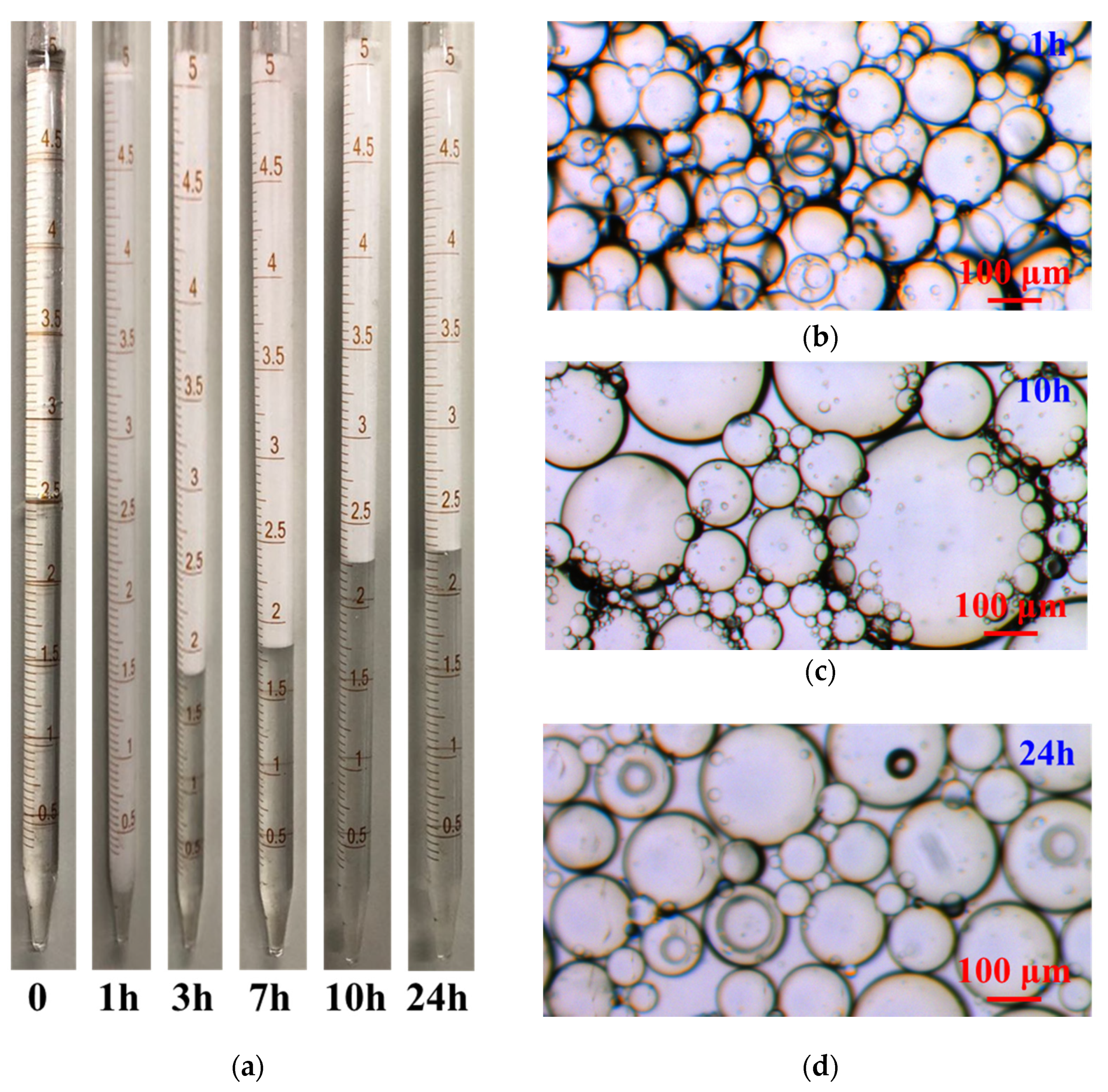

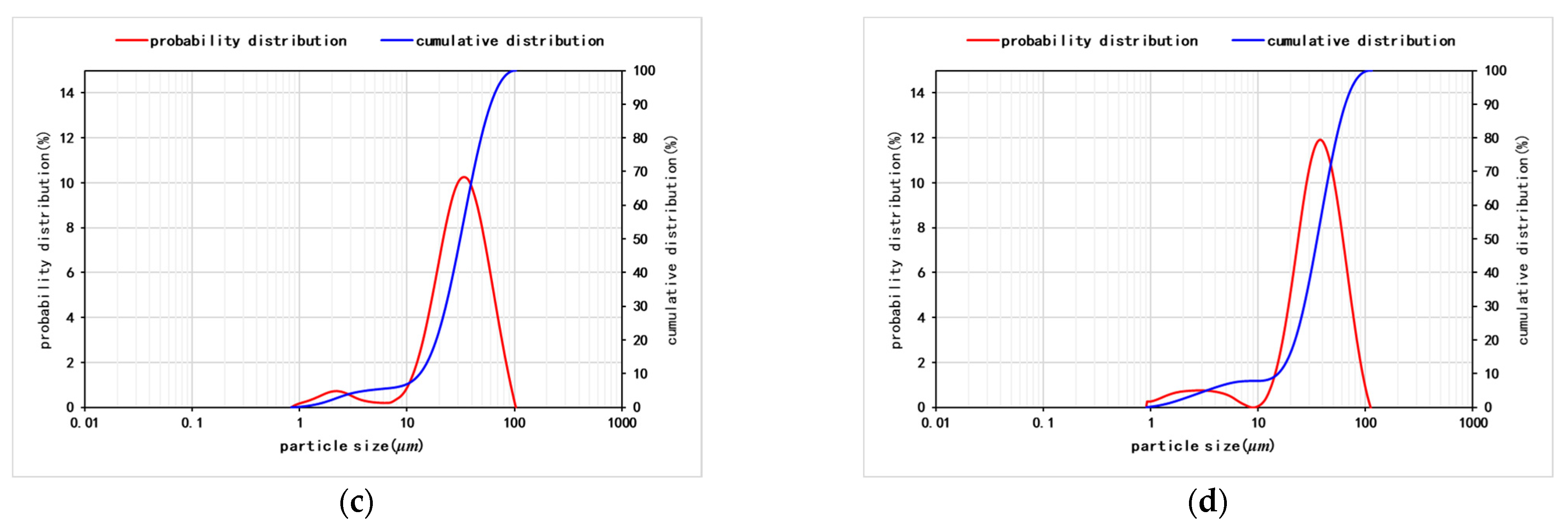
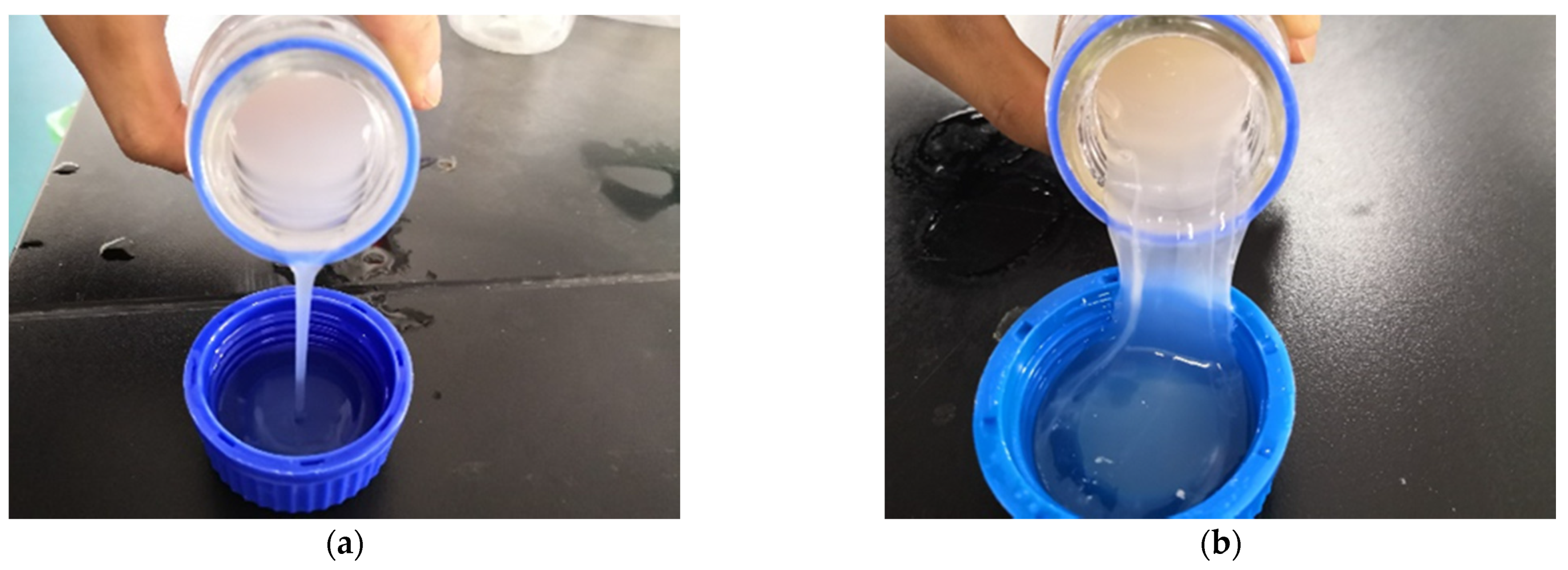
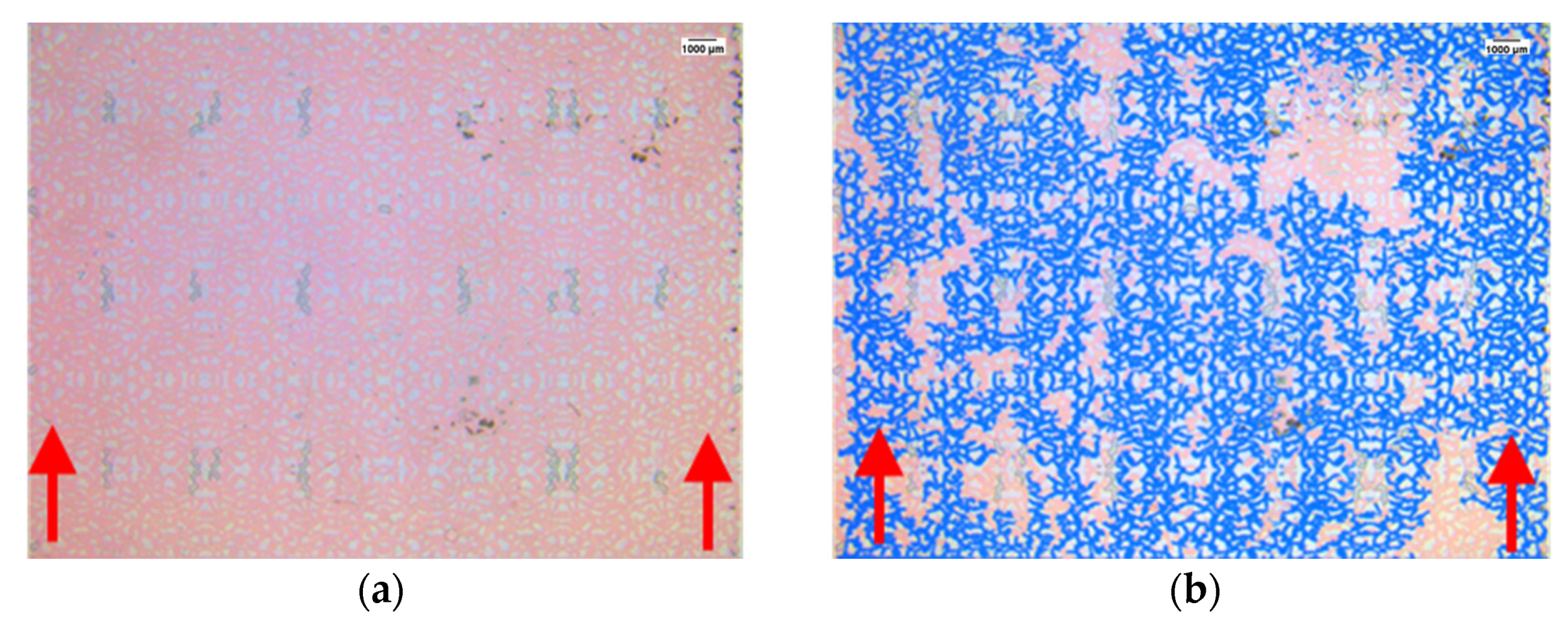
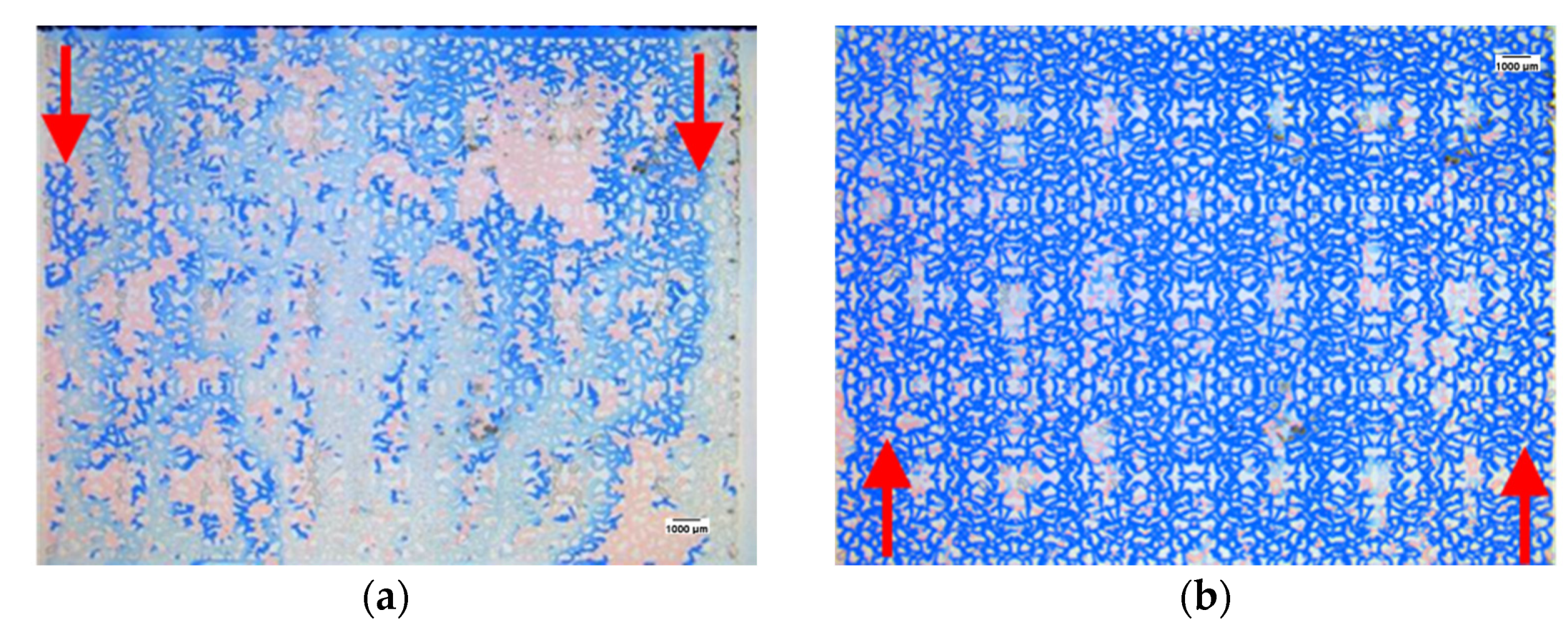

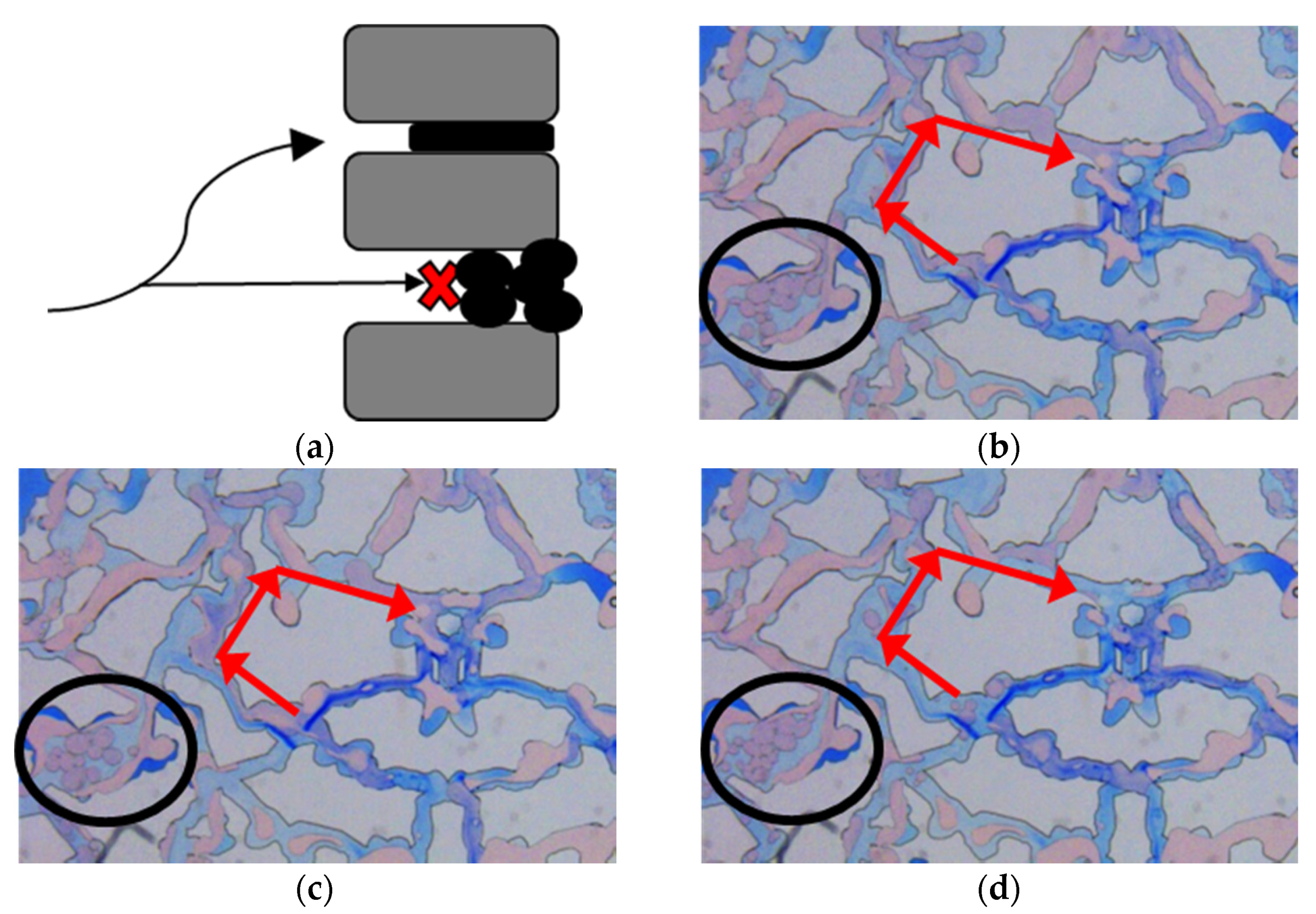
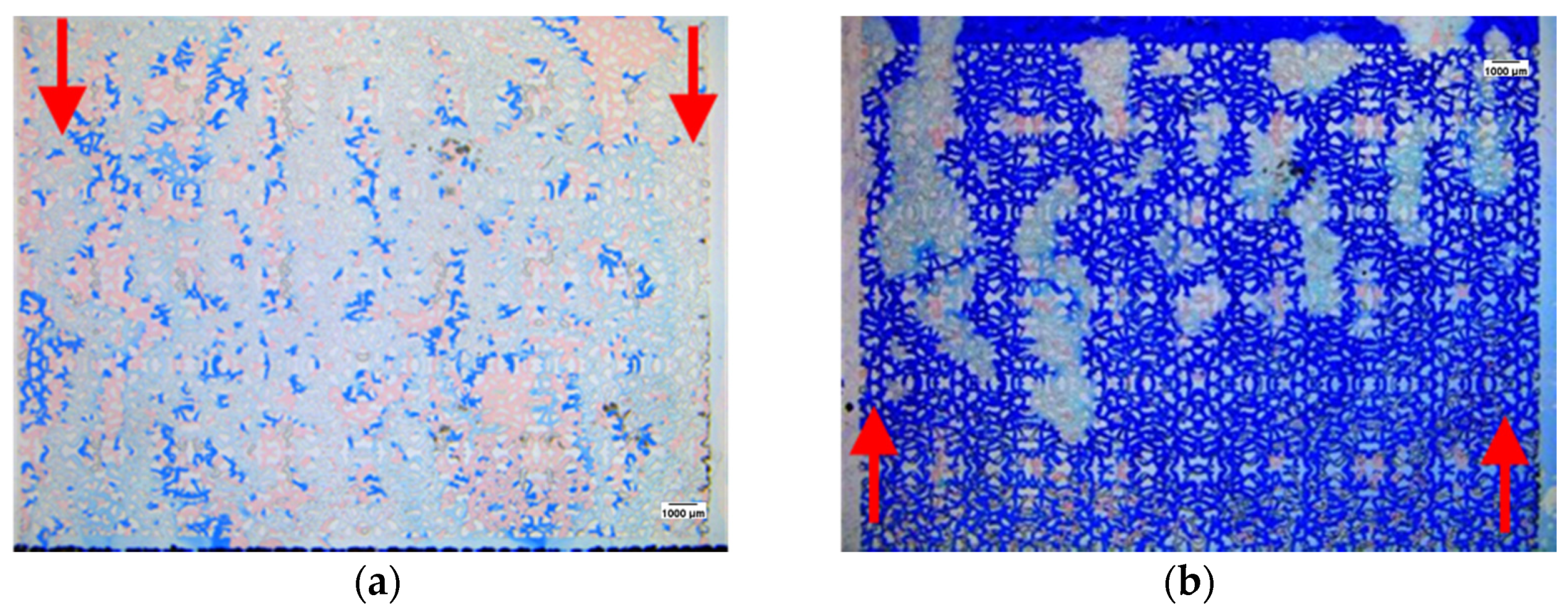

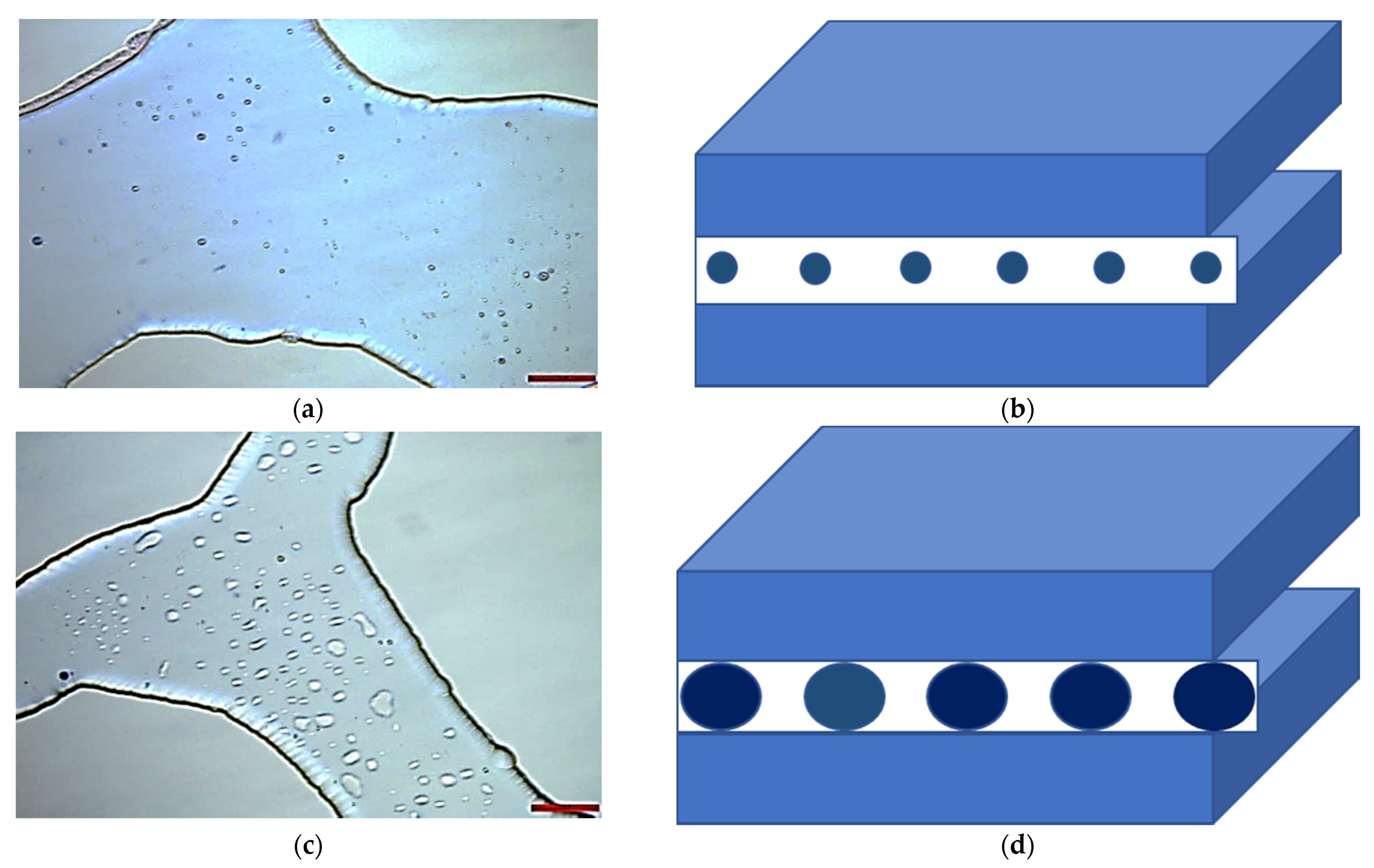

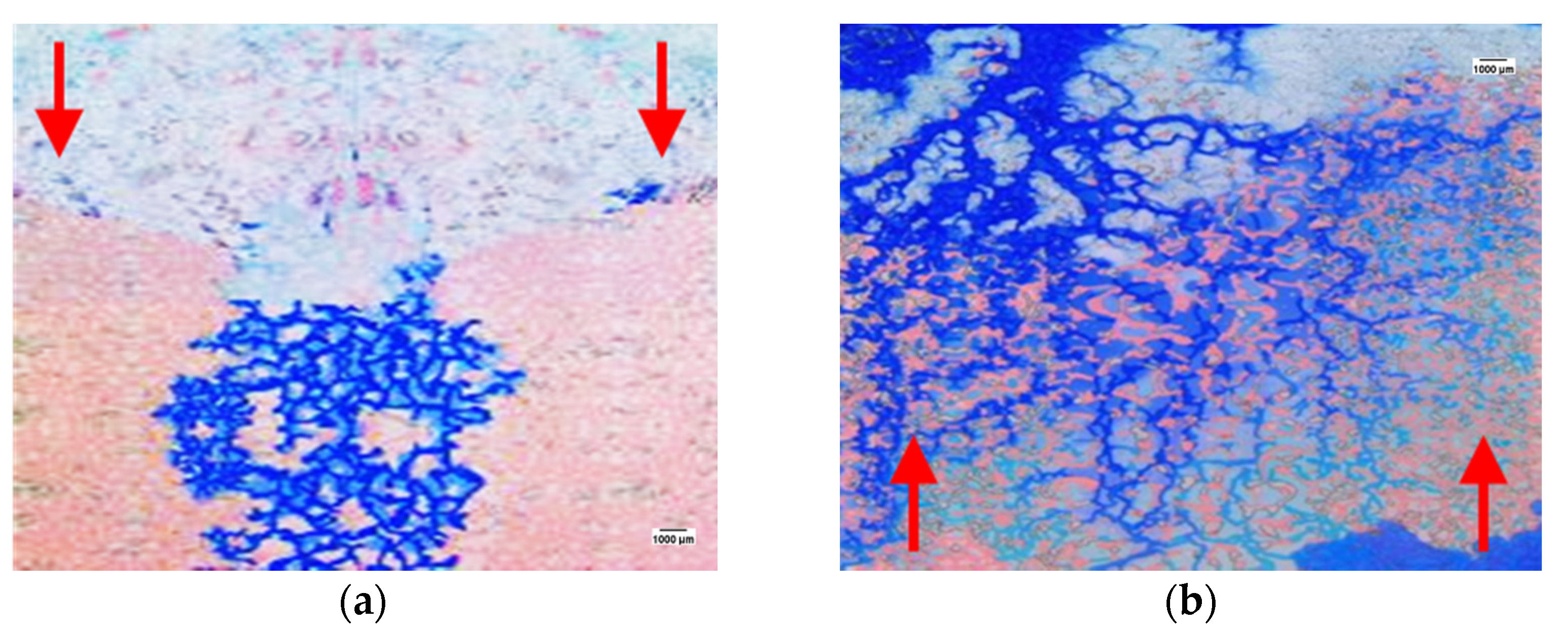
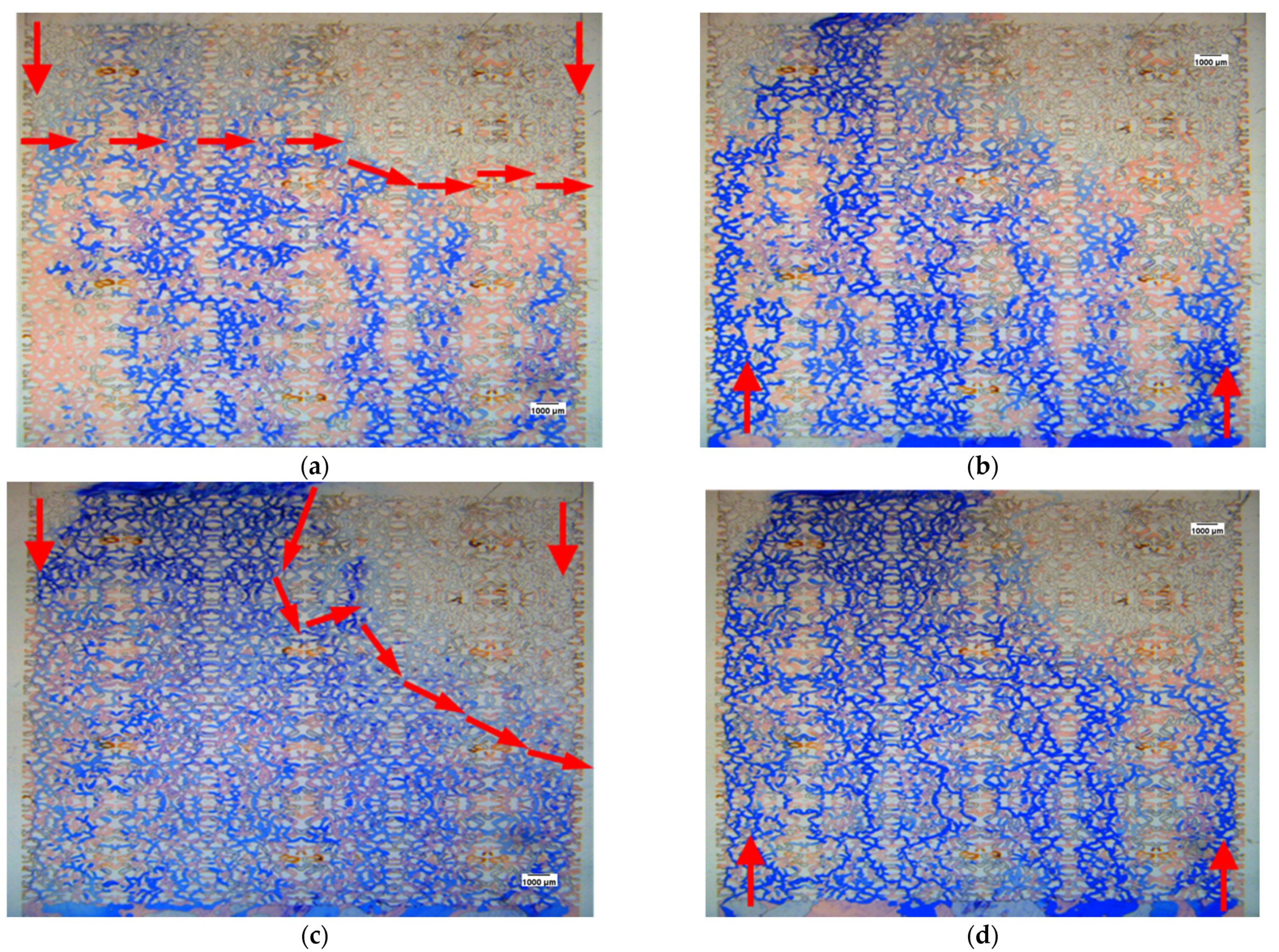

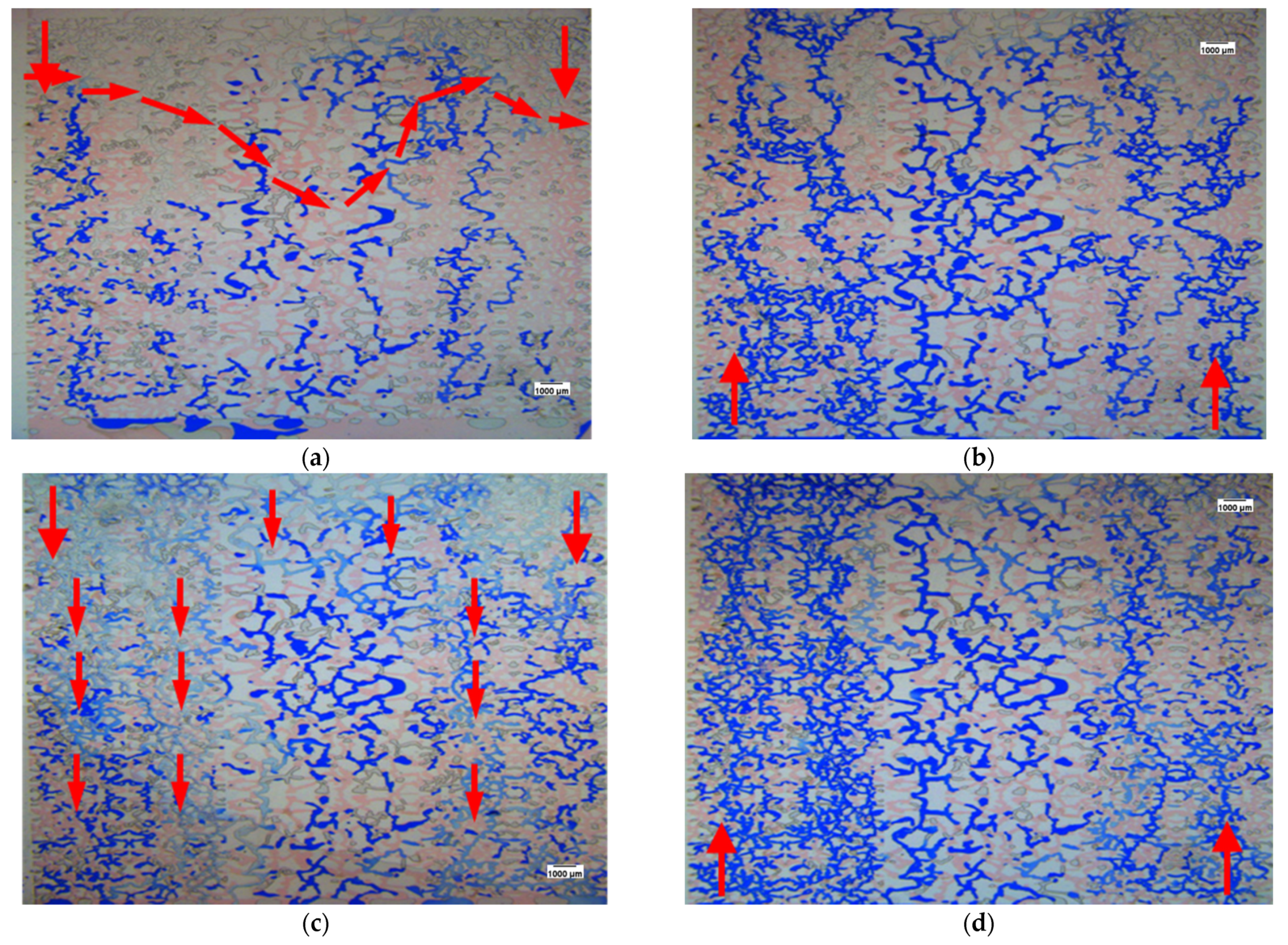
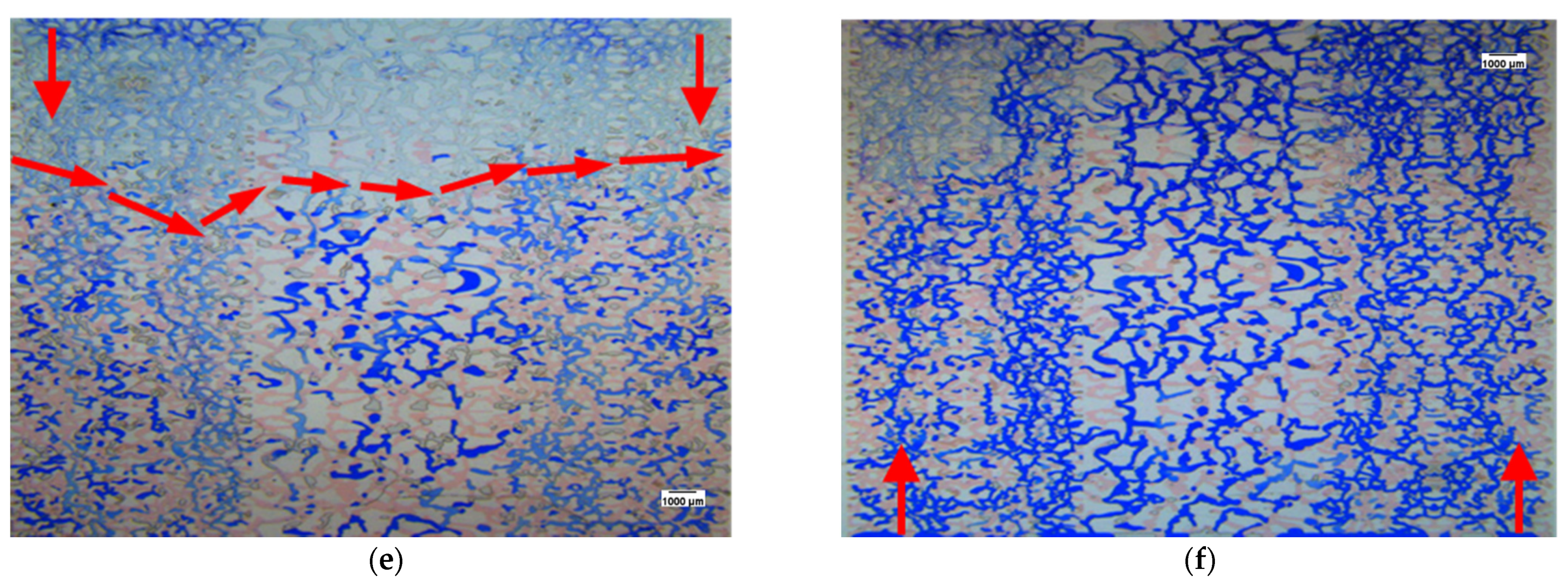
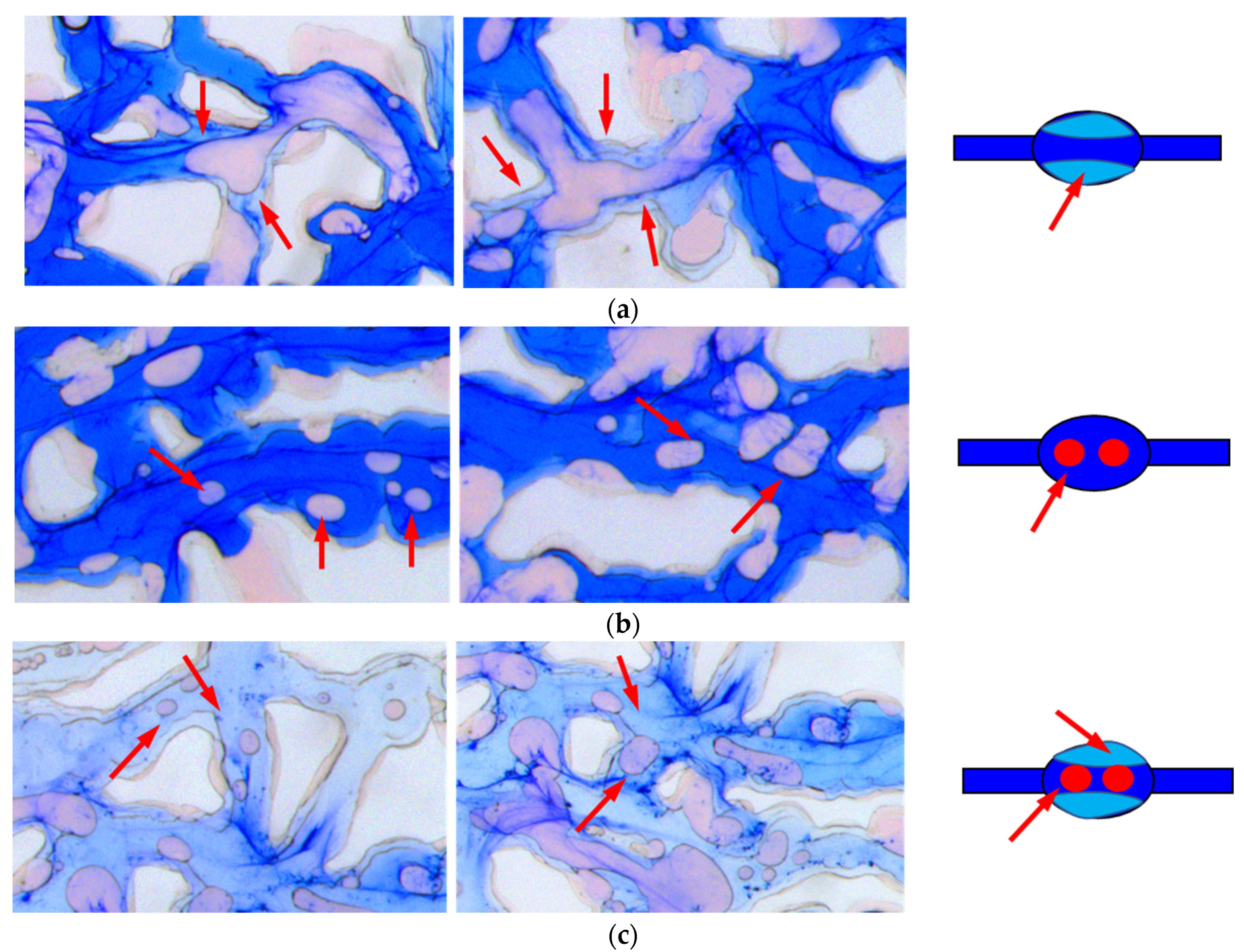
Publisher’s Note: MDPI stays neutral with regard to jurisdictional claims in published maps and institutional affiliations. |
© 2022 by the authors. Licensee MDPI, Basel, Switzerland. This article is an open access article distributed under the terms and conditions of the Creative Commons Attribution (CC BY) license (https://creativecommons.org/licenses/by/4.0/).
Share and Cite
Wang, Y.; Jiang, H.; Li, L.; Wang, L.; Li, J. Flow Physics of Profile Control Fluids in Porous Media and Implications for Enhanced Oil Recovery: A Microfluidic Study. Processes 2022, 10, 112. https://doi.org/10.3390/pr10010112
Wang Y, Jiang H, Li L, Wang L, Li J. Flow Physics of Profile Control Fluids in Porous Media and Implications for Enhanced Oil Recovery: A Microfluidic Study. Processes. 2022; 10(1):112. https://doi.org/10.3390/pr10010112
Chicago/Turabian StyleWang, Yicheng, Hanqiao Jiang, Liang Li, Lida Wang, and Junjian Li. 2022. "Flow Physics of Profile Control Fluids in Porous Media and Implications for Enhanced Oil Recovery: A Microfluidic Study" Processes 10, no. 1: 112. https://doi.org/10.3390/pr10010112




